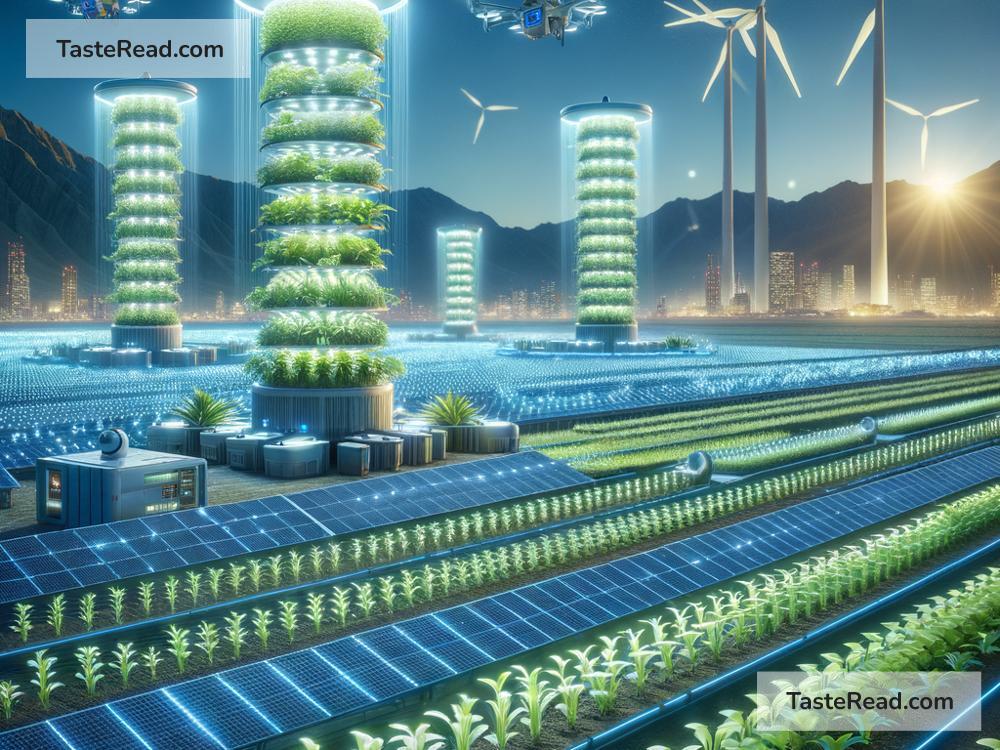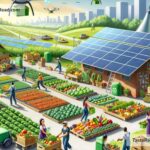The Future of Climate-Smart Agriculture: Growing Food in a Changing World
The world is changing. As our planet gets warmer due to climate change, farmers face new challenges. They have to deal with unpredictable weather, droughts, floods, pests, and poor soil. At the same time, the global population is growing fast. By 2050, scientists say we’ll need to produce up to 70% more food to feed everyone. But how do we grow more food while taking care of the planet? The answer lies in climate-smart agriculture.
Climate-smart agriculture (CSA) is an approach to farming that helps farmers adapt to climate change, reduce their impact on the environment, and grow enough food for everyone. It focuses on three main goals: (1) increasing productivity, (2) making farms more resilient to climate problems, and (3) reducing greenhouse gas emissions from farming.
As the world turns its attention to the climate crisis, CSA is becoming more important than ever. In this article, we’ll explore the future of climate-smart agriculture and how it can shape our food systems for generations to come.
The Need for Climate-Smart Agriculture
Climate change is already affecting the way food is grown. For example:
– Heavy rains are flooding crops in some countries.
– Long droughts are drying up farmland in others.
– Higher temperatures are making pests and diseases more common.
These problems make farming more unpredictable and difficult. Without effective solutions, the world may struggle to grow enough food.
At the same time, agriculture itself contributes to climate change. Farms produce greenhouse gases like carbon dioxide and methane through activities such as clearing forests, using chemical fertilizers, and raising livestock. A big challenge for the future is finding ways to make farming less harmful to the planet.
How Climate-Smart Agriculture Works
CSA is about working smarter, not harder. It includes practices and technologies that help farmers deal with climate change while protecting the environment. Some examples of CSA methods are:
-
Using Resilient Crops: Scientists are developing new types of crops that can survive extreme weather. For instance, drought-resistant maize or flood-tolerant rice can give farmers a better chance of success even in tough conditions.
-
Improving Soil Health: Healthy soil is the foundation of farming. Adding organic matter to soil, using cover crops, and reducing chemical fertilizers can keep soil rich and productive for years to come.
-
Precision Farming: Advanced technology like drones, sensors, and artificial intelligence helps farmers use resources more efficiently. For example, instead of watering an entire field, sensors can show exactly where water is needed. This reduces waste.
-
Reducing Livestock Emissions: Raising animals, especially cows, produces a lot of methane—a powerful greenhouse gas. Better feed, efficient waste management, and small changes to farming practices can cut down on emissions.
-
Agroforestry: Planting trees alongside crops helps absorb carbon dioxide, provide shade, prevent soil erosion, and offer farmers additional sources of income like fruit or timber.
By combining these practices, CSA helps farmers prepare for the unexpected while protecting the planet for future generations.
The Role of Technology and Innovation
Technology plays a huge role in the future of climate-smart agriculture. For example:
– Big Data: Farmers are starting to use data to make decisions. Information about weather patterns, soil conditions, and plant health can help them optimize their farms to produce more food with fewer resources.
– Smart Irrigation: Innovations like drip irrigation reduce water waste by delivering water directly to plant roots.
– Gene Editing: Gene-editing tools like CRISPR allow scientists to create crops that can withstand extreme weather or resist pests without relying on harmful chemicals.
These breakthroughs are making CSA faster, cheaper, and more accessible, especially for small-scale farmers.
Policy and Global Cooperation
For CSA to succeed, governments and organizations need to work together. Policies that support sustainable farming, provide financial incentives, and invest in research are essential. Farmers also need education and training to adopt climate-smart methods.
Countries must make CSA a priority in their food and climate policies. For instance:
– Encouraging reforestation and agroforestry.
– Promoting carbon markets, where farmers are paid to cut emissions.
– Supporting local knowledge, such as indigenous farming practices that have been successful for centuries.
Global initiatives like the UN’s Sustainable Development Goals (SDGs) are already paving the way for cooperation. By working together, we can create an agricultural system that builds a better future.
Challenges Ahead
While CSA shows great promise, there are challenges to overcome:
– Cost Barriers: Many climate-smart technologies are expensive, especially for smallholder farmers in developing countries.
– Education Gaps: Some farmers may not know how to use CSA techniques or may resist changes to traditional practices.
– Scaling Up: CSA needs to grow from pilot projects to widespread solutions that benefit millions of farms worldwide.
Governments, businesses, and non-profits must join forces to address these obstacles.
A Hopeful Future
The future of agriculture is filled with opportunities. Climate-smart agriculture can help solve both the food crisis and the climate crisis. By adopting smarter practices and using cutting-edge technology, farmers can grow food sustainably while protecting the planet.
However, CSA is not just about farmers—it’s about all of us. Everyone who eats has a role to play. Supporting policies that promote sustainable farming, reducing food waste, and choosing environmentally friendly products can make a difference.
As we look ahead, climate-smart agriculture offers hope for a healthier, more resilient planet—one where people and nature thrive together. It’s a future worth working toward.


